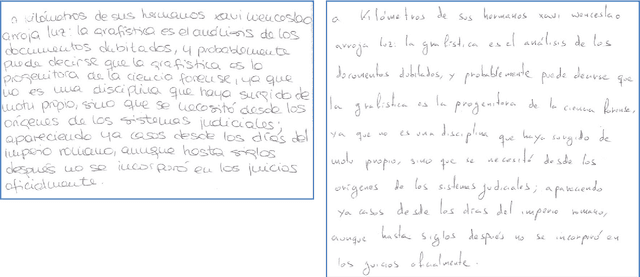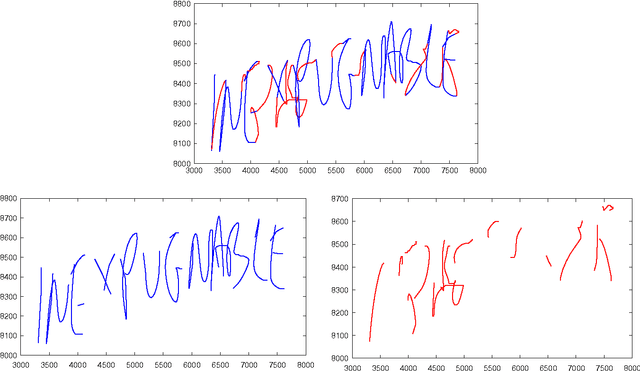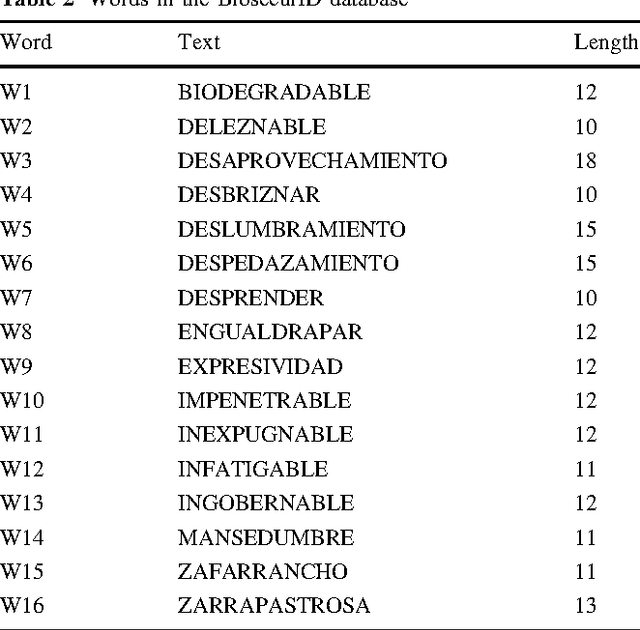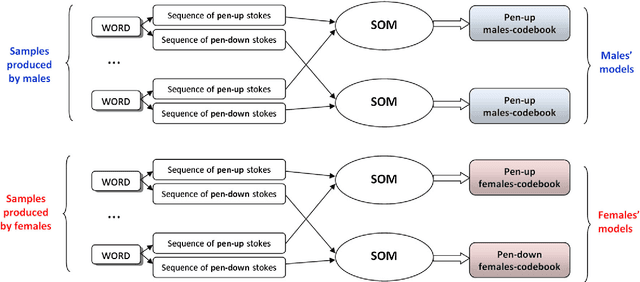Gender classification by means of online uppercase handwriting: A text-dependent allographic approach
Paper and Code
Mar 18, 2022



This paper presents a gender classification schema based on online handwriting. Using samples acquired with a digital tablet that captures the dynamics of the writing, it classifies the writer as a male or a female. The method proposed is allographic, regarding strokes as the structural units of handwriting. Strokes performed while the writing device is not exerting any pressure on the writing surface, pen-up (in-air) strokes, are also taken into account. The method is also text-dependent meaning that training and testing is done with exactly the same text. Text-dependency allows classification be performed with very small amounts of text. Experimentation, performed with samples from the BiosecurID database, yields results that fall in the range of the classification averages expected from human judges. With only four repetitions of a single uppercase word, the average rate of well classified writers is 68%; with sixteen words, the rate rises to an average 72.6%. Statistical analysis reveals that the aforementioned rates are highly significant. In order to explore the classification potential of the pen-up strokes, these are also considered. Although in this case results are not conclusive, an outstanding average of 74% of well classified writers is obtained when information from pen-up strokes is combined with information from pen-down ones.
 Add to Chrome
Add to Chrome Add to Firefox
Add to Firefox Add to Edge
Add to Edge